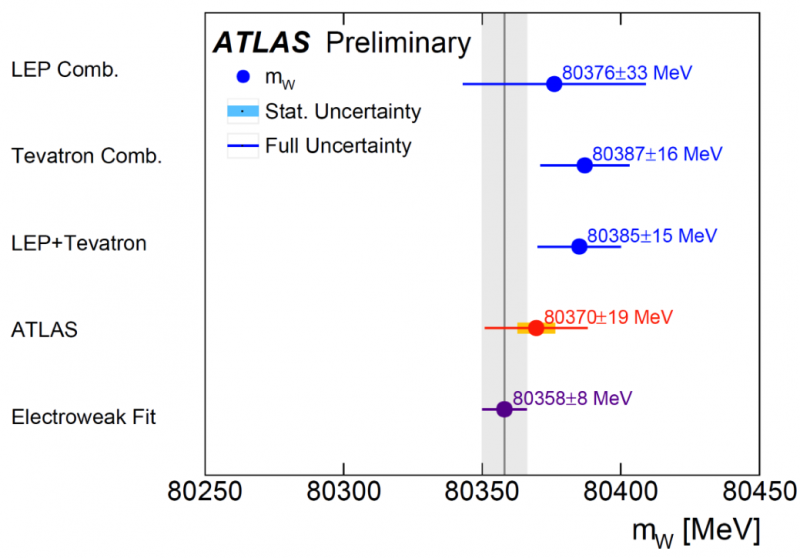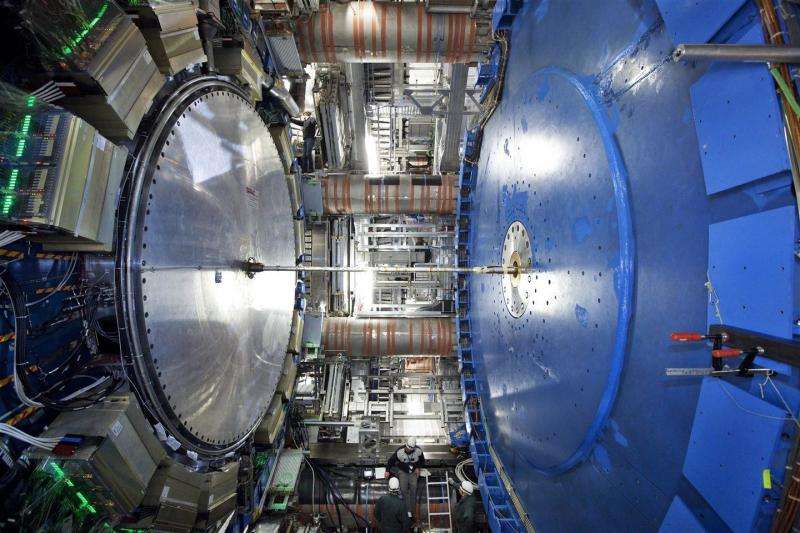The ATLAS measurement of the W boson mass (in red) is compared to the Standard Model prediction (in purple), and to the combined values measured at the LEP and Tevatron collider (in blue). Credit: ATLAS Collaboration/CERN
The ATLAS collaboration today reports the first measurement of the W boson mass using Large Hadron Collider (LHC) proton–proton collision data at a centre-of-mass energy of 7 TeV.
The W boson was discovered in 1983 at the CERN SPS collider and led to a Nobel prize in physics in 1984. Although the properties of the W boson have been studied for more than 30 years, measuring its mass remains a major challenge. A precise measurement of the W boson mass is vital, as a deviation from the Standard Model's predictions could hint at new physics.
The latest results from ATLAS show a measured value of 80370±19 MeV, which is consistent with the Standard Model prediction. It is also consistent with the combined values measured at the LEP and Tevatron colliders, and with the world average (see graph above).
Measuring the W mass is particularly challenging at the LHC, compared to previous colliders, due to the large number of interactions per beam crossing. Despite this, the ATLAS result matches the best single-experiment measurement of the W mass (performed by the CDF collaboration) .
ATLAS is one of the four major experiments at the LHC. It is a general-purpose particle physics experiment run by an international collaboration. Credit: CERN
More information: Read more on the ATLAS experiment's website: atlas.cern/updates/physics-bri … asuring-w-boson-mass
Provided by CERN
























